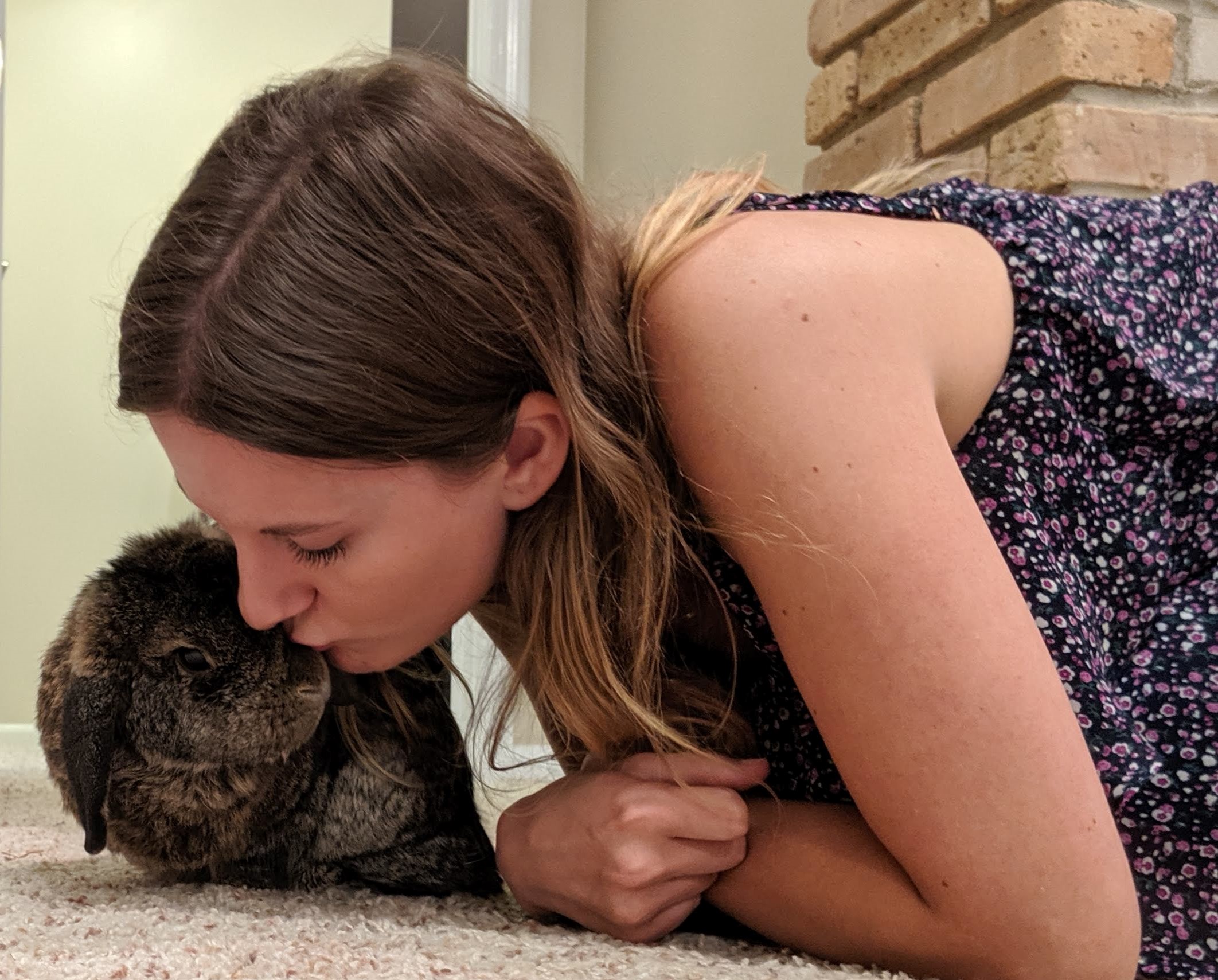My Lyme Journey Part 1: Lyme, Bartonella, and Biotoxin Illness
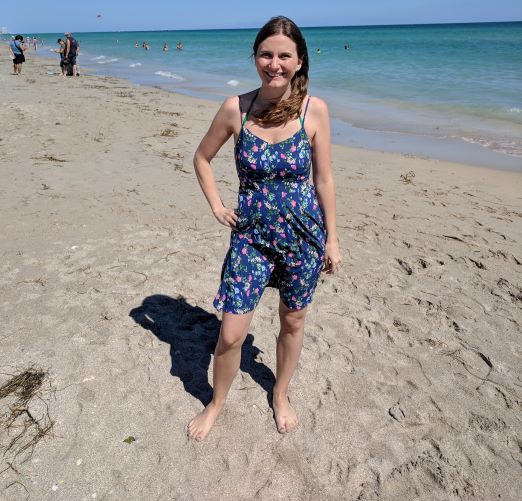
Though I was just diagnosed with Lyme, Bartonella, and biotoxin illness a year ago, my Lyme journey began more than a decade earlier. Maybe even more than two decades ago. This blog describes part one of my Lyme journey.
When I was about eight (which was 25 years ago), I went from doctor to doctor because I was constantly complaining of headaches, foot pain, and asthma-like symptoms. I had tonsillitis and strep throat more times than I can remember, and it was the first time in my life I started acting out in school. I was a very shy and conscientious child, so this behavior was very uncharacteristic of me.
My mom suspected there was something going on with the portable classroom I was in that school year, but of course, the school dismissed that idea and claimed there was absolutely nothing wrong with the building. I was diagnosed with exercise-induced asthma but we never got to the bottom of the headaches or foot pain.
Once I reached middle school, the tonsillitis and strep throat continued. By the time high school rolled around, I developed an irritable bowel, extremely sensitive skin, anxiety and depression, and hot flashes. I was diagnosed with mono during my senior year of high school, missed about a month of school, and somehow still managed to graduate early.
I remember my doctor saying there were no reliable tests for mononucleosis, so they diagnosed me with mono based on my symptoms alone. I was tested for Epstein–Barr, however, which came back negative.
I was again diagnosed with mono right before I was supposed to begin college, so I ended up starting school a semester late. I remember being in so much pain and discomfort that I could only lay on the couch or in bed while binge-watching Laguna Beach. The mono was so much worse this time around, and I ended up with an enlarged spleen, a very low neutrophil count, and extremely high lymphocyte blood levels. This time I was formally tested for mononucleosis and it came back positive.
Chronic Gut Issues, Fatigue, Cancer, and More
I eventually recovered from the mono and was able to start college, but it was not smooth sailing from there. My digestive issues worsened — causing chronic diarrhea — and I couldn’t eat anything without having an upset stomach. I developed a strange skin condition on the tops of my feet and ankles (known as granuloma annulare), which swelled and became painful to the point where I couldn’t comfortably walk for a day or two. The rash has only flared up once since then, but the rash itself has never gone away.
I was also fatigued, which led my doctor to once again order a test for Epstein–Barr. The test came back negative, but my red blood cell count was high.
My doctor suspected Lyme and ended up ordering IgG and IgM immunoblots, but both tests came back negative according to CDC standards. I did, however, test positive for the 41 KD IgG and IgM bands. I have a strong feeling the immunoblots would have come back positive if I’d been tested when my neutrophils and lymphocytes had been abnormal, but I’ll never know if that’s the case. I don’t remember ever finding a tick on me or seeing an EM rash, but I spent a lot of time camping, fishing, and biking as both a child and teen.
Over the next few years, I experienced recurring urinary tract infections, abdominal pain, neck pain and stiffness, chronic diarrhea, a chronically runny nose, and fatigue. But despite all this, I graduated from college with a Bachelor of Arts in Professional Writing and a minor in Creative Writing, got married to the guy who stuck by my side throughout all the ups and downs, and landed my first full-time job. I adopted a plant-based diet and my stomach issues improved immensely. Things were looking pretty good, and I’d learned to live with my various ailments.
As time passed and I continued to avoid dairy, eggs, and meat, I could finally enjoy food for the first time in years. But then I started noticing one strange symptom: I would feel drunk even though I hadn’t been drinking alcohol. I brought this up to my doctor and she just looked at me strangely and told me I needed to get more sleep. Again, I learned to live with the symptom.
Around the same time, my vision started changing and my neck pain worsened. Things started to look distorted and I would feel completely spaced out when under certain types of lighting (especially fluorescent lights). I’d experience sensory overload while grocery shopping, when sitting in loud or crowded bars and restaurants, or whenever I was surrounded by lots of people. I attributed it to anxiety.
Shortly thereafter, my mom (who I’ve always been very close to), was diagnosed with stage 4 colon cancer. Almost immediately I began experiencing brain fog: It was like someone flipped a switch and I was a completely different person — and not in a good way. I was constantly stressed, depressed, weepy, and felt like my brain no longer worked properly.
After my mom had surgery at the Mayo Clinic in Rochester, MN, my husband and I came home after a week away to find our basement completely flooded. Our sump pump had failed after several days of heavy rain, so our basement could’ve been wet for a day or two before we even noticed. We immediately contacted a water removal and restoration company, but it was still a few days before our basement was dried out and back to normal. We moved our wet furniture and belongings into the garage to dry out, and moved them back downstairs once the restoration was complete.
Over the next year, my brain fog and stress levels worsened and I started experiencing a slew of new symptoms: Horrible pelvic and abdominal pain, extreme abdominal bloating, pain and breathlessness when bending over, amenorrhea, night sweats, migraines, chronic acid reflux, back pain, and fatigue. I saw about five different doctors for various tests, and everyone seemed to think I was pregnant despite the negative pregnancy tests. My husband and I didn’t plan on having children, but the doctors didn’t seem to believe me when I promised them I wasn’t pregnant.
The medical tests continued, and aside from having slightly elevated TSH and B12 levels, everything else appeared normal. That is, until my doctor ordered an ultrasound of my pelvis and abdomen. They detected a large cystic and solid mass in the abdomen, most likely ovarian in origin. This was causing swelling in my right kidney and other organs, and they immediately suspected a malignancy. I was 27 years old.
I was referred to a gynecological oncologist at the University of Minnesota; underwent a major open surgery to remove the tumor, my right ovary and fallopian tube, appendix, and several lymph nodes; and waited for my biopsy results. The tumor ended up being cancerous, but fortunately, it had not spread to my lymph nodes. I was diagnosed with stage 1A ovarian cancer and was instructed to have a colonoscopy and endoscopy within the next few months, as well as regular examinations with the oncologist.
Since the ovarian tumor had likely been growing for about six years before I was finally diagnosed with cancer (according to earlier ultrasounds I’d had done), I naively hoped and prayed that the tumor was responsible for all the different symptoms I’d been experiencing over the years — including the brain fog. But when the brain fog didn’t improve, I begged my oncologist to order a Lyme test. He was skeptical, but eventually agreed.
At the time, I assumed all doctors were Lyme experts — so I believed him when he told me the test came back negative for detectable Borrelia burgdorferi antibodies (according to CDC standards). For a few more years, I dismissed the possibility of having Lyme and focused on exploring other culprits. I had a CT scan and MRI of my brain, which both came back unremarkable.
I took supplement after supplement; eliminated gluten, grains, and sugar from my diet; avoided processed foods; and spent hours every week researching possible causes of brain fog. I tried acupuncture and chiropractic care for my brain fog, vision changes, neck pain, and neck stiffness, but nothing helped. Sometimes the neck pain was so bad that I couldn’t move my head from side to side.
When I finally convinced my primary care physician to test me for thyroid autoantibodies, I thought I hit the jackpot when the test came back positive. Hashimoto’s, an autoimmune disease, must be the reason I’ve been so fatigued and brain-fogged all these years! Again, I was so very wrong.
My symptoms did not improve once I started treatment for Hashimoto’s, and again, I saw doctor after doctor for various tests, took supplement after supplement, and researched potential causes of brain fog. To say it consumed my life would be an understatement. But when you can’t think, concentrate, or focus; find words; retain information; or figure things out like you used to, who wouldn’t be desperate for an answer?
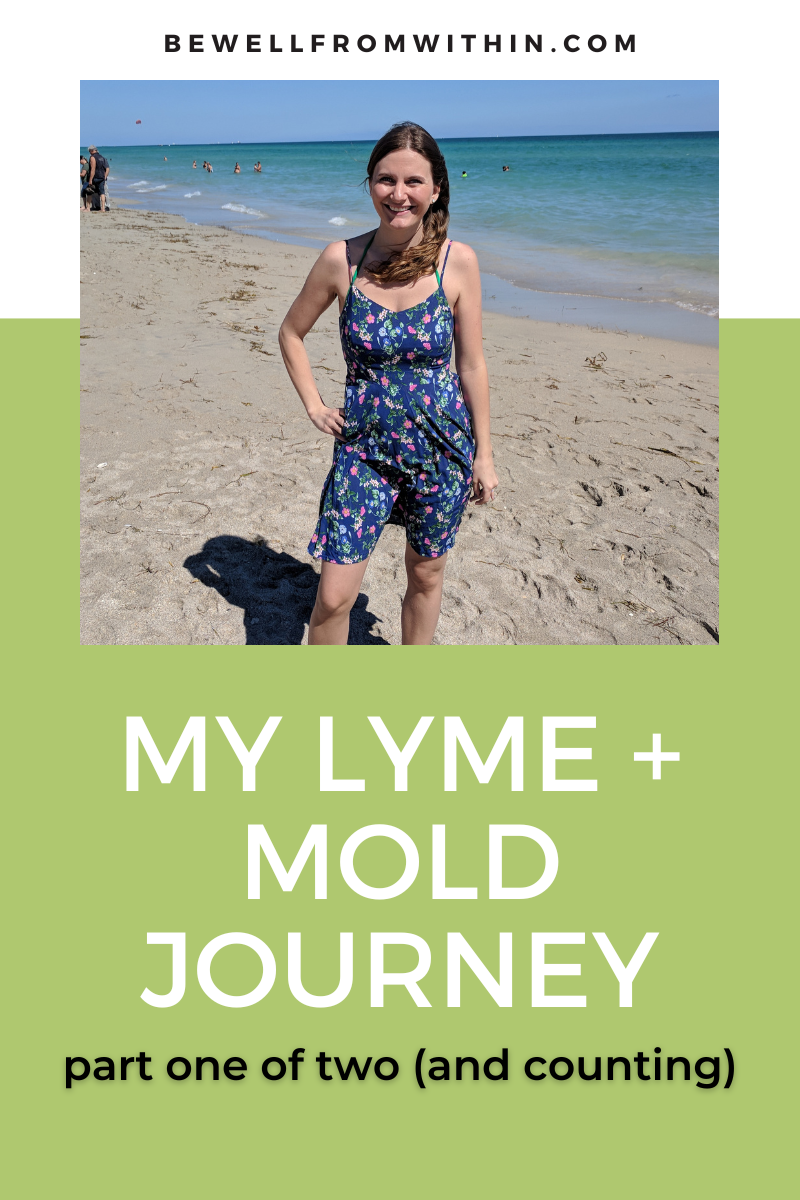
Worsening Symptoms, Still No Answers
Eventually, new symptoms began to appear: I developed occipital neuralgia, daily headaches and migraines, recurring bronchitis, chronically swollen lymph nodes, ongoing muscle pain and weakness, recurring shin pain that would last for days, chronic fatigue, joint pain in my left toes and right wrist, drenching night sweats, pelvic pain, itchy ears, and of course, worsening brain fog. Some days it felt like my brain was running through mud, and other days it felt like my head was filled with cotton.
My primary care physician referred me to a neurologist, my endocrinologist referred me to a therapist, and the neurologist referred me to both a psychiatrist and an occupational therapist. The neurologist recommended a nerve block for the occipital neuralgia, told me to see a psychiatrist for ADD testing, and recommended occupational therapy for the brain fog.
I met with the occupational therapist over a several-month period, which aside from making me feel dumber than ever, was not very helpful at the time. Still, I completed the exercises she sent home with me, made time for brain training every night, and increased my intake of brain-friendly foods like berries and omega-3 fatty acids.

After undergoing virtual ADD testing with the psychiatrist I was referred to, the doctor said I did not have ADD but instead diagnosed me with adjustment disorder with anxiety. She told me to see a therapist to get help with managing my stress and anxiety levels. I followed the doctor’s recommendations and immediately scheduled an appointment for therapy.
I’m still seeing the same therapist today, and her kindness and compassion have been very helpful — mainly for dealing with the stress and anxiety of feeling horrible yet not having a medical diagnosis to explain my symptoms. When I eventually told her about my Lyme diagnosis (more to come on that), she told me she had suspected Lyme all along but didn’t want to say anything since she’s not a doctor. She did not think my symptoms were the result of stress or anxiety.
A Lyme Diagnosis, At Last
After officially losing hope in the conventional medical system (and spending thousands of dollars on supplements, scans, and lab tests that did nothing to help me), I made an appointment with a Lyme-literate naturopathic doctor in Saint Paul, MN. I still wondered about having Lyme disease after all these years, so I felt drawn to this doctor knowing she had lots of experience diagnosing and treating patients with Lyme.
My naturopath ordered several IgeneX tests, which finally came back positive for Lyme and one co-infection: Bartonella. Even though I tested negative for Babesia, Ehrlichiosis, Anaplasmosis, and Rickettsiosis, my doctor isn’t ruling these out completely — mainly because I’m still having drenching night sweats (which could indicate Babesiosis).
My doctor also ordered the Vibrant Wellness Mycotoxin test, which revealed high levels of Penicillium and Stachybotrys chartarum in my urine (a follow-up test from Great Plains Labs revealed A LOT more, so stay tuned for that in part two). And while my husband and I no longer live in the home with the basement that flooded several years back, we now reside in an older home that has likely had some water damage in the past. For this reason, we felt it was necessary to test our current home for mold and determine whether the mold found in my urine is from a past or current mold exposure.
Unfortunately, our ERMI dust test showed extremely high levels of toxic mold (including Stachybotrys chartarum, Penicillium crustosum, Aspergillus ochraceus, Wallemia sebi, and Aspergillus niger). We immediately met with an Empowerment Coach at We Inspect, and ended up scheduling a complete mold inspection for later this summer. After the mold inspection, we’ll determine which parts of our home need to be remediated — and we’ll hire a remediation company to complete the job. Healing from Lyme, Bartonella, and biotoxin illness feels so close yet so far away.
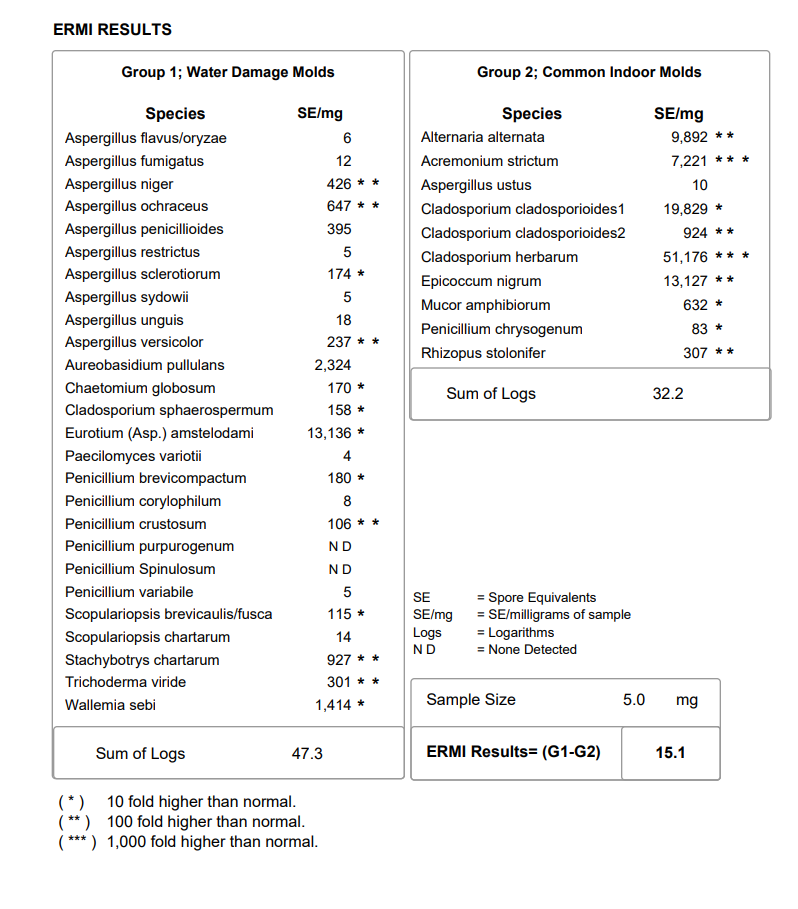
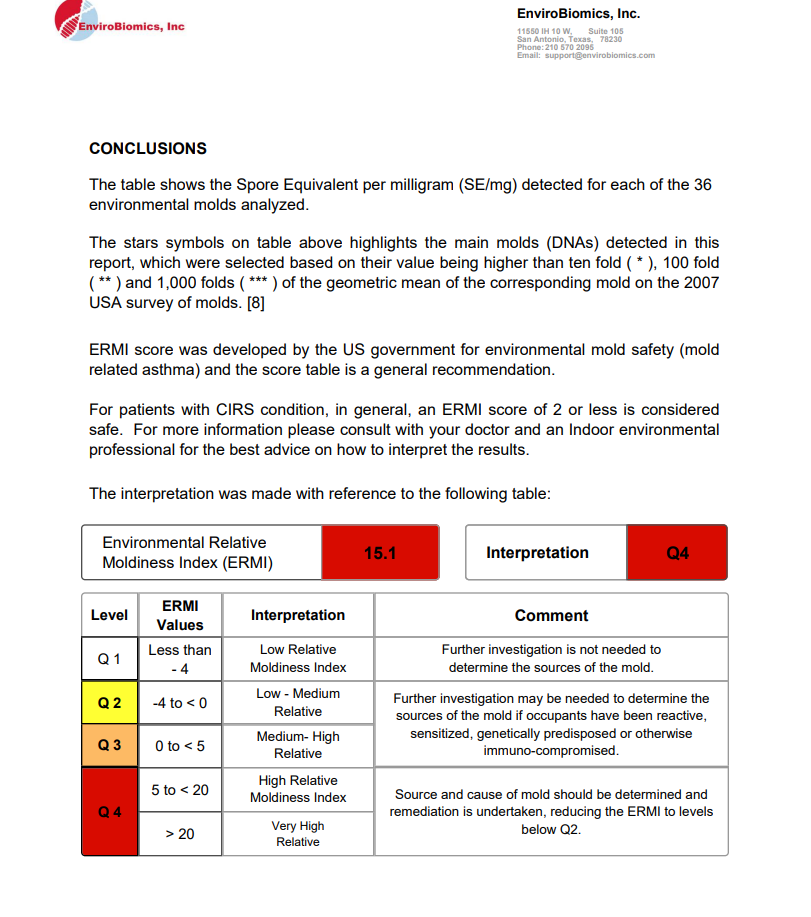
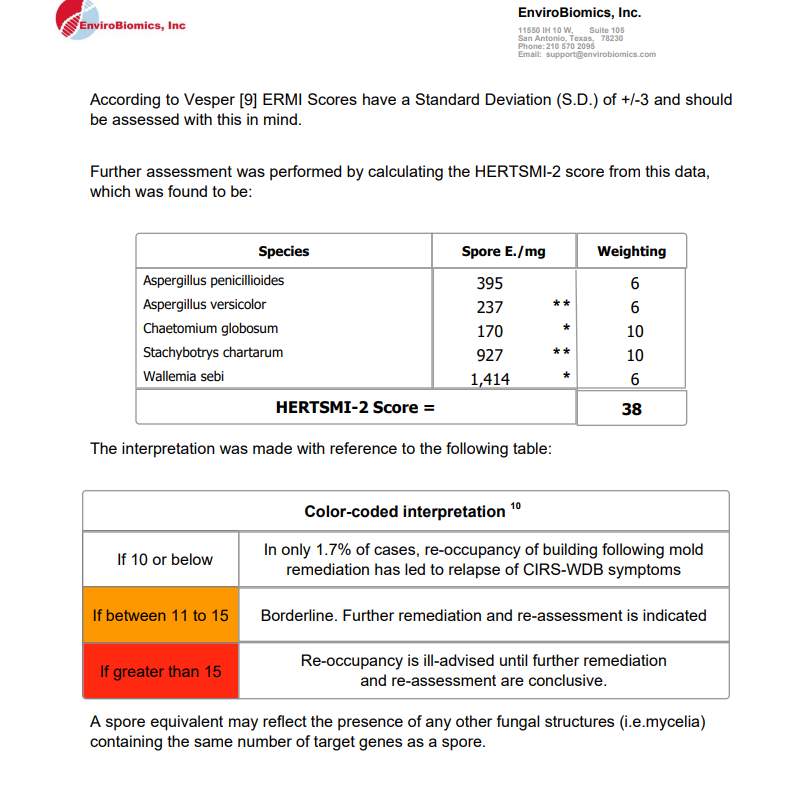
My First Lyme Treatment Protocol
This section was written several months ago and a lot has changed since then!
Until our home inspection, I’ll continue to follow my naturopath’s recommendations as we work to kill the Lyme bacteria, detox mold from my body, balance my hormones, boost my immune system, and heal my damaged gut. I’m currently using an at-home far infrared sauna about three times a week, soaking in a hot Epsom salt bath on my non-sauna days, and using overnight castor oil packs about four times a week. I'm also using ozone therapy.
I’m taking a variety of different supplements, herbs, and botanicals as well. These include Biocidin LSF, GI Detox, resveratrol, EstroDIM, Glutashield, B vitamins, buffered vitamin C, vitamin D3, magnesium glycinate, sarsaparilla root, bile salts, omega oil, and UNDA numbered compounds.
These treatments and consultations are a financial investment, and I’m so lucky that my husband has supported me every step of the way. Knowing that so many people cannot afford to invest this much time and money into getting a diagnosis and then treating their condition is so heartbreaking. My heart goes out to anyone who is struggling, especially those who do not have the financial resources to keep digging for answers. When I’m eventually in remission from these illnesses or at least showing some improvements, I will do everything I can to help others who are also struggling.
My Advice to Others With Lyme, Bartonella, and Mold Illness
Since receiving my Lyme diagnosis, I’ve been spending much of my free time reading books about Lyme and mold illness, listening to related podcasts, and practicing self-care. Knowing I’m not alone in this journey is so very comforting, as it tells me that I, too, can heal from these illnesses that have plagued me for so many years.
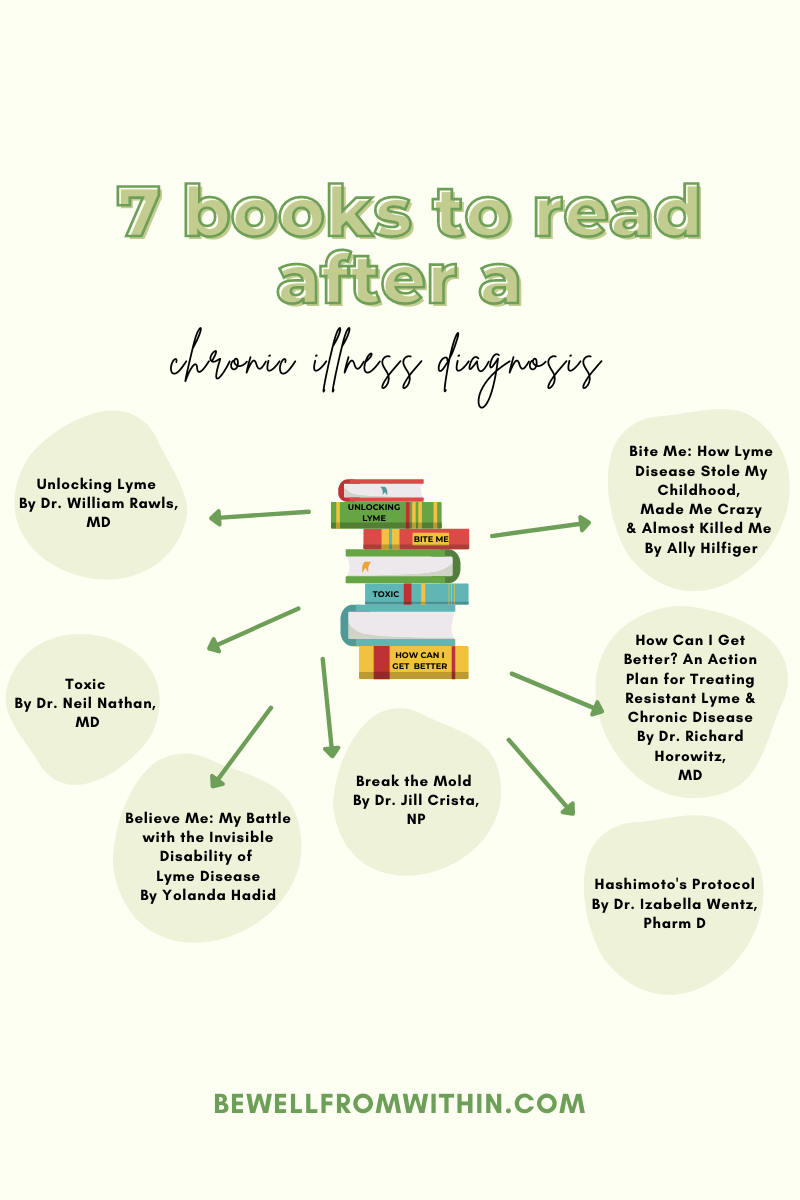
It’s been so helpful to have other Lyme healing stories to read or listen to as I navigate my diagnosis, and it’s truly one of the only things that give me hope. There are so many others who suffer silently, just as I have been.
For so many years, I tried to be my own doctor because I felt like nobody could help me. I had come to accept my “new normal”. Please don’t make this same mistake. Locate a Lyme specialist near you, and don’t stop searching for answers until you’re finally seeing progress.
All this time, I was looking for answers in all the wrong places. I still have a long ways to go, but getting a diagnosis is half the battle. Things can only get better from here.
At Well From Within, I provide freelance blogging and guide writing services to health and wellness professionals. Contact me today to learn more and let's work together to make the world a healthier place!

